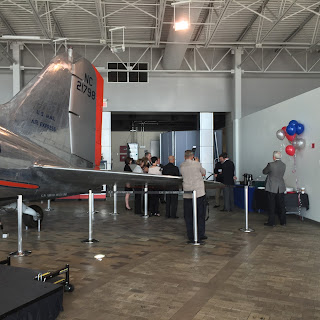Eagle Aviation Camps
Take off with us at 2015 Eagle Aviation Camp! A limited group of students will have the unique opportunity to experience the world of aviation through our Eagle Aviation Camps. Meet aviation professionals, tour facilities, perform experiments and activities and learn what it takes to be an aviator!- Please complete the Registration, Student Profile, Medical Consent, General Release Forms available on our website. You may also print out completed registration packets and mail or bring with payment to the C.R. Smith Museum.
- Click here for the registration forms.
- Additional release forms, provided to you, might be necessary.
- Parents are responsible for transportation of campers each day to and from the Museum
- Transportation for field trips will be provided by a qualified transportation company
- Campers must provide own lunches
- Museum will provide drinks and snacks everyday
- Each student will receive an Eagle Aviation t-shirt and goodie bag
**Camps are full day week long, Monday through Friday. Campers must be entering listed grades above in the Fall 2015**
For scholarship information click here.Eagle Aviation Camps 2015
- Eagle Aviation Camp Beginner
Grades: 5th-6th
Member Price: $200
Non-member Price: $250
Dates & Times: June 15th-19th/9am-4pm - WILD Flight Science Camp
Grades: 3rd-5th
Member Price: $200
Non-member Price: $250
Dates & Times: June 22nd-26th/9am-4pm - Flight Adventure Camp
Grades: 3rd-5th
Member Price: $200
Non-member Price: $250
Dates & Times: July 6th-10th/ 9am-4pm - Eagle Aviation Camp Advanced
Grades: 7th-8th
Member Price: $225
Non-member Price: $275
Dates & Times: July 13th-17th/ 8:30am-4pm
Check out photos from past Eagle Aviation Camps here!

















































